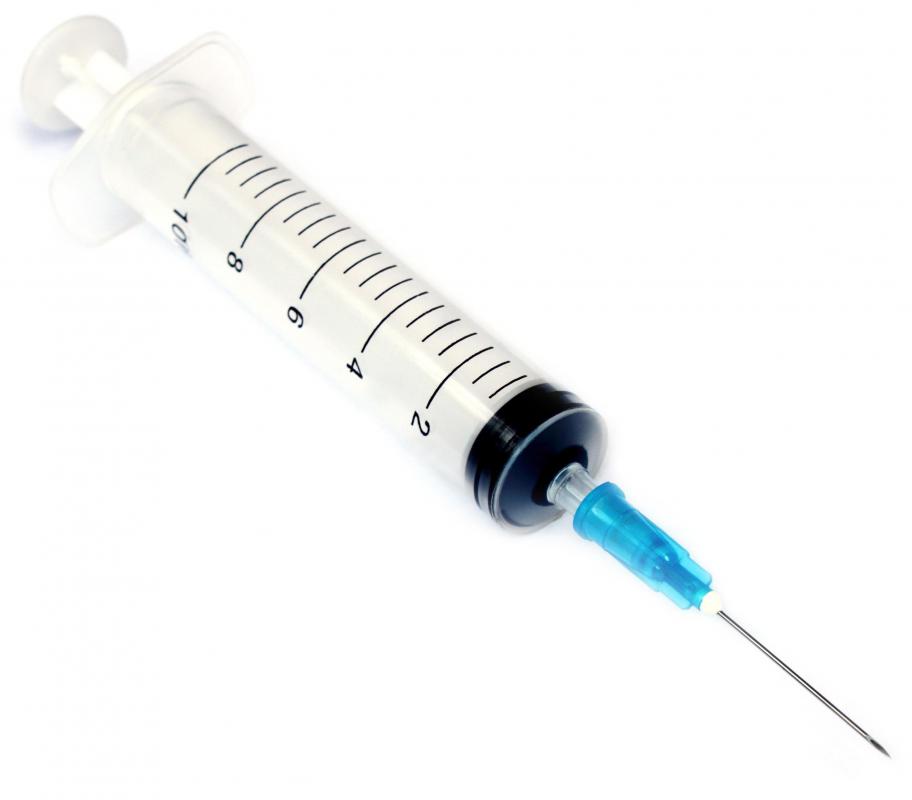At TheHealthBoard, we're committed to delivering accurate, trustworthy information. Our expert-authored content is rigorously fact-checked and sourced from credible authorities. Discover how we uphold the highest standards in providing you with reliable knowledge.
What Is a Nose Keloid?
A nose keloid is an excessive amount of scar tissue left over from an injury, typically from a previous nose piercing. When the nose cartilage is pierced, most often to insert jewelry, it traumatizes the skin tissue; keloids can slowly grow from this injury point over the course of days or months. Found mostly within the African American community, nose keloids are generally harmless, unless they contribute to psychologically damaging disfigurement.
Skin appears raised at the nose keloid damage site, and can range in color from pinkish beige to brown. Initial emergence of the scar tissue causes an itchy feeling with possible tenderness. Like most scars, a nose keloid will slowly fade over time, but will not disappear entirely.

Doctors will commonly diagnose a nose keloid by removing a portion and analyzing its composition, a procedure referred to as a biopsy. The medical professional must rule out any form of tumor that may indicate a cancerous growth. Removal must be performed carefully to prevent more keloid growth at the trauma site.
Treatments vary widely for a nose keloid, ranging from simple compression therapy to radical removal surgery. Removal surgery is not a main choice among medical practitioners since the surgical cuts into the nose tissue may generate new keloid patches. Constant pressure from a bandage over a period of several months can reduce the keloid size without fear of new growths.

A nose keloid will stop growing and remain in a fixed state for many years. Patients should not try to pick at the scar tissue since this can encourage more growth; alternative treatments can be elected for bothersome nose keloids. Some patients resort to cryosurgery, effectively freezing the scar tissue and preventing it from expanding. Another treatment option is injections of a corticosteroid. This medicine reduces the scar tissue size over a period of several injection rounds.

Patients must be aware that keloids tend to be hereditary. As a result, people with a history of nose keloid growth should refrain from piercing their noses. In fact, all skin trauma, from tattoos to other body piercings, should be avoided so keloids do not appear in other areas.
A keloid patient should remain in the shade on sunny days. New keloid tissue is prone to tanning darker than the surrounding skin, causing an unsightly spot across the nose. Unlike normal tanning across the skin, which fades over time, keloid tanning retains the dark color since the scar tissue does not slough off skin cells in the same manner as the healthy skin.
AS FEATURED ON:
AS FEATURED ON:













Discussion Comments
@donasmrs-- Piercings don't always cause keloids for me even though I am prone to keloids. As long as the nose piercing is kept clean, it should be fine.
@alisha-- You need to see your doctor first to confirm that it's a keloid. It sounds like one, but it's a good idea to make sure. There are some scar creams that work fairly well for small keloids. They also help prevent a keloid from getting bigger. I would recommend trying this treatment first.
Whatever you do, don't play with the piercing and keloid. Nose piercings always cause problems for keloid-prone people because it's not a one-time thing. First the stud is put in and then the stud is changed. So the piercing has many opportunities to get irritated and develop scar tissue.
Now that you know that you are prone to keloids, you should avoid piercings from now on.
I got a nose piercing three months ago. Everything seemed to be fine for a few days but then a little bump right on top of the piercing developed. I had to remove my piercing permanently. My piercing is closed off now but the bump is still there. It's not growing but it looks bad, like I grew a mole on my nose overnight.
What's the best treatment for this? Has anyone tried cryosurgery? Did it work well?
Post your comments